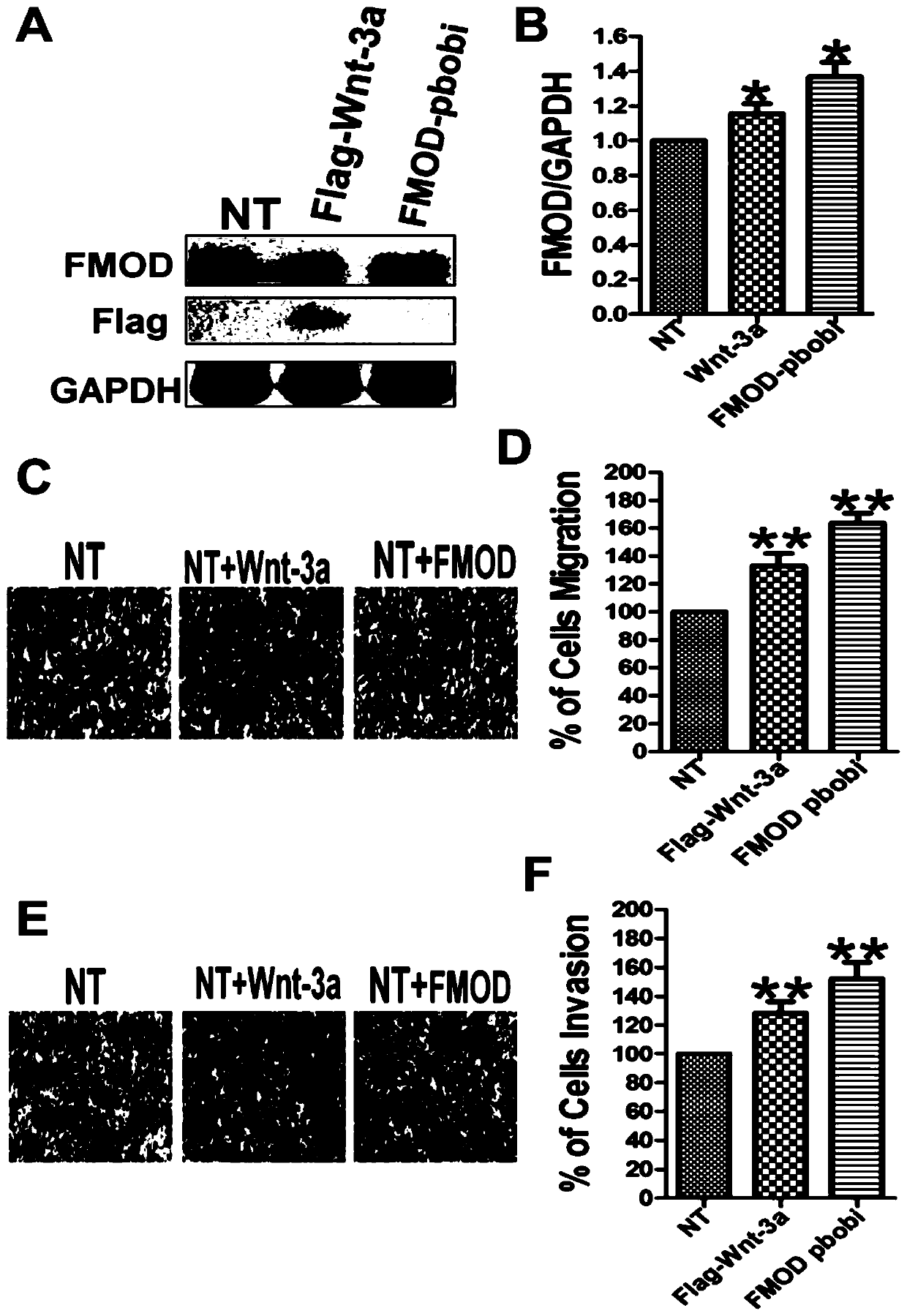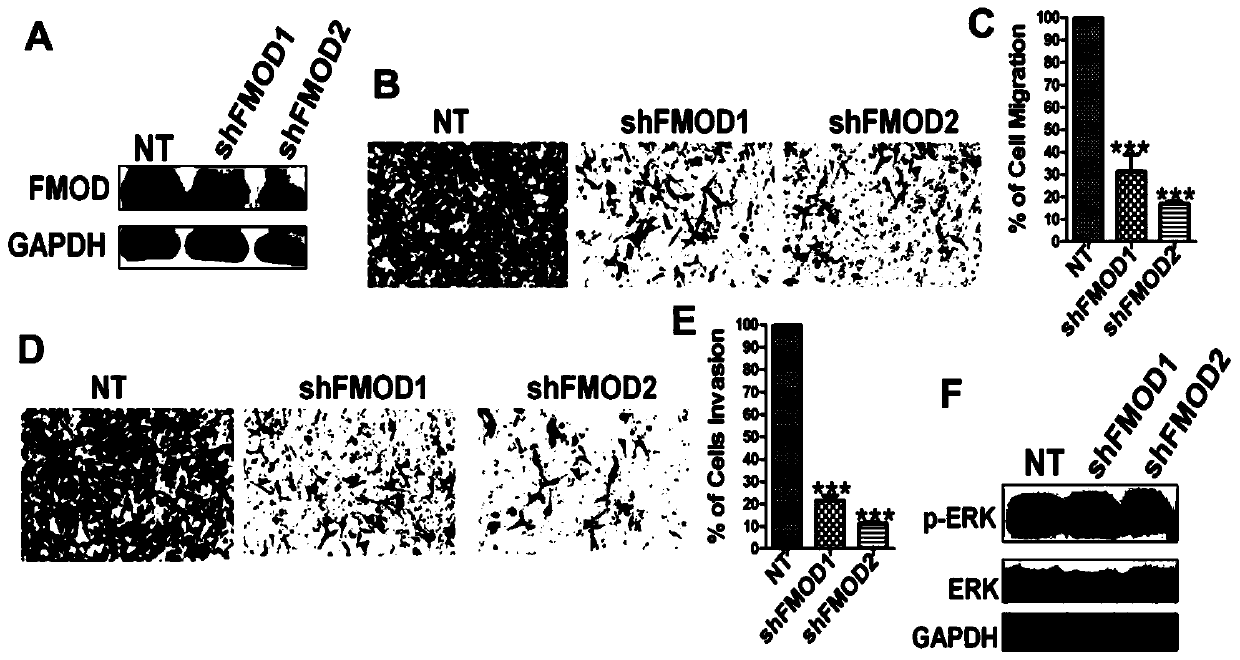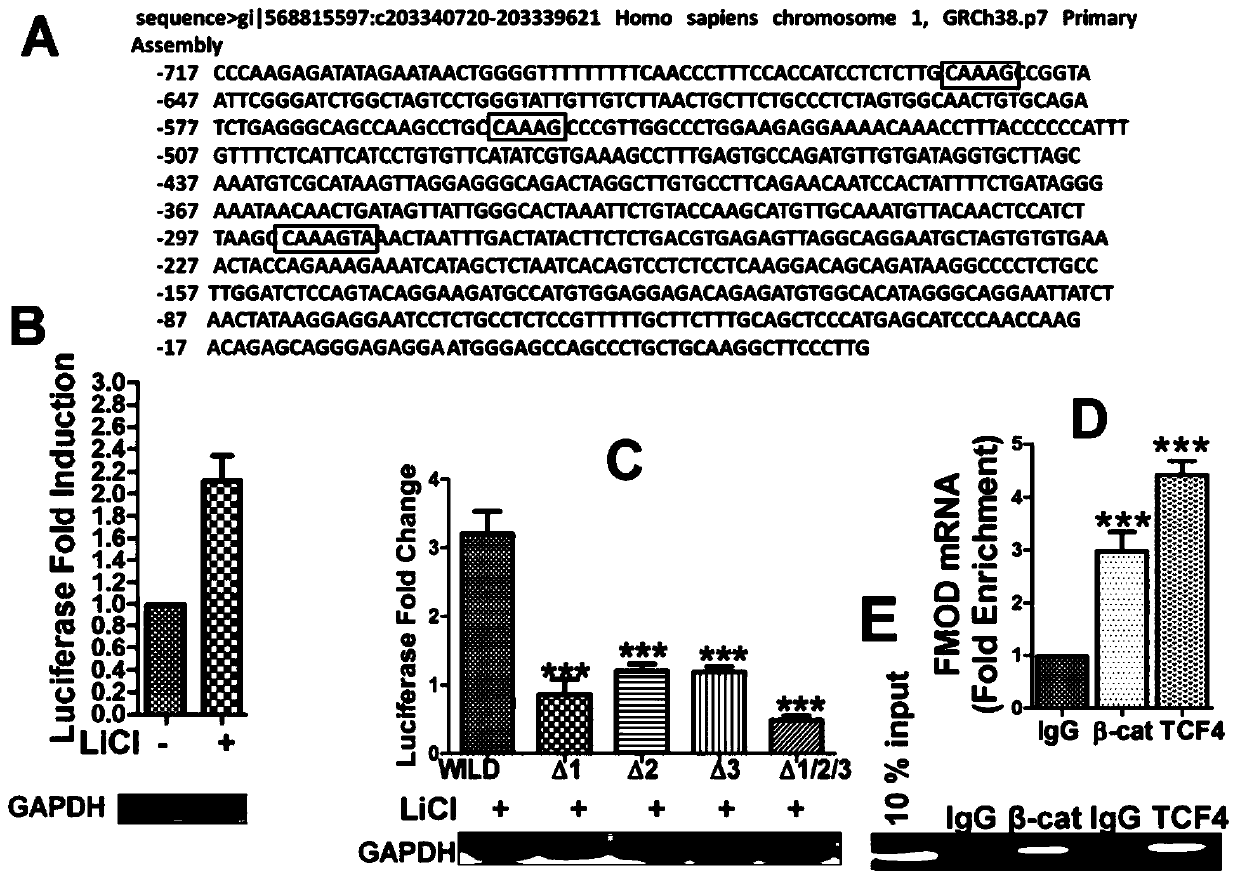Molecular marker for diagnosis of breast cancer and application of molecular marker
A molecular marker, breast cancer technology, applied in the field of molecular markers for breast cancer diagnosis, to achieve high sensitivity and specificity
- Summary
- Abstract
- Description
- Claims
- Application Information
AI Technical Summary
Problems solved by technology
Method used
Image
Examples
Embodiment 1
[0055] The effect of Wnt-3a on the expression level of FMOD protein
[0056] 1. Flag-Wnt-3a and FMOD-pbobi plasmids were transfected into breast cancer cell line MDA-MB-231
[0057] When the cell coverage reached 40-50%, proceed to plasmid transfection. Replace with fresh culture medium before transfection. Dilute 5-10 μL of plasmid into 250 μl of serum-free culture medium, and dilute 2.5-5 μL of lipoRNAiMax transfection reagent into 250 μl of serum-free culture medium, mix them well, let stand at room temperature for 5 minutes, and then separate the two tubes of solution Mix evenly together, let stand at room temperature for 20 minutes, then slowly and uniformly drop the incubated solution into the 6-well plate, shake the plate while adding, so that it can fully and evenly contact the cells to prevent local accumulation of transfection reagents on the cells Cause damage and affect the growth state of cells. Then gently put it in the cell culture incubator for cultivation, ...
Embodiment 2
[0081] Effect of shRNA plasmid knockdown of FMOD protein level on migration and invasion of breast cancer cells Lentiviral transfection:
[0082] Need to prepare the target plasmid, packaging plasmid 1.0 and packaging plasmid 2.0, 293T cells. Spread the 293T cells evenly in a 10cm culture dish, wait for the logarithmic growth phase, and perform transfection after the cell density reaches about 70%-80%. Use PEI transfection reagent (only for 293T transfection) during transfection. Add the above-mentioned amounts of the target plasmid, packaging 1.0, and packaging 2.0 to 750 μl of serum-free high-glucose medium, then add 40 μl of PEI to the same amount of high-sugar without serum, mix well, and incubate at room temperature for 5 minutes. Then mix the two together, then mix well, incubate at room temperature for 20 minutes, add dropwise to the cells, mix well while adding, and place in a 37°C incubator for incubation. After 6 hours of cell transfection, replace with fresh cultu...
Embodiment 3
[0086] Effect of Wnt / β-catenin signaling pathway on FMOD protein expression
[0087] luciferase reporter assay
[0088] MDA-MB-231 and HEK 293T cells were seeded on 12-well plates. When cells were grown to 60%-70% confluency, cells were transfected with wild-type or mutant plasmids indicating that the luciferase reporter plasmid for the PGL 3 enhancer of FMOD (wild-type) contains the FMOD promoter sequence. Replace with fresh medium before transfection. Dilute 5-10 μL of plasmid into 250 μL of serum-free culture medium, and dilute 2.5-5 μL of lipoRNAiMax transfection reagent into 250 μL of serum-free culture medium, mix well, let stand at room temperature for 5 minutes, and then put the two tubes of solution Mix evenly together, let stand at room temperature for 20 minutes, then slowly and uniformly drop the incubated solution into the 6-well plate, shake the plate while adding, so that it can fully and evenly contact the cells to prevent local accumulation of transfection r...
PUM
 Login to View More
Login to View More Abstract
Description
Claims
Application Information
 Login to View More
Login to View More - R&D
- Intellectual Property
- Life Sciences
- Materials
- Tech Scout
- Unparalleled Data Quality
- Higher Quality Content
- 60% Fewer Hallucinations
Browse by: Latest US Patents, China's latest patents, Technical Efficacy Thesaurus, Application Domain, Technology Topic, Popular Technical Reports.
© 2025 PatSnap. All rights reserved.Legal|Privacy policy|Modern Slavery Act Transparency Statement|Sitemap|About US| Contact US: help@patsnap.com



